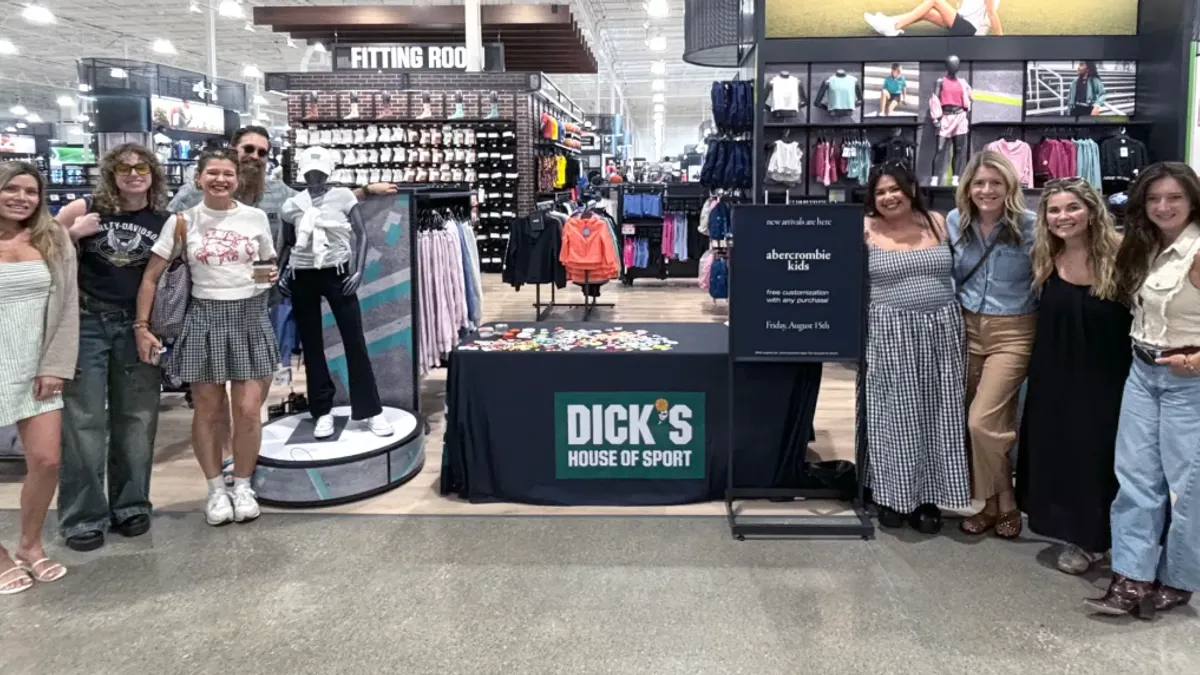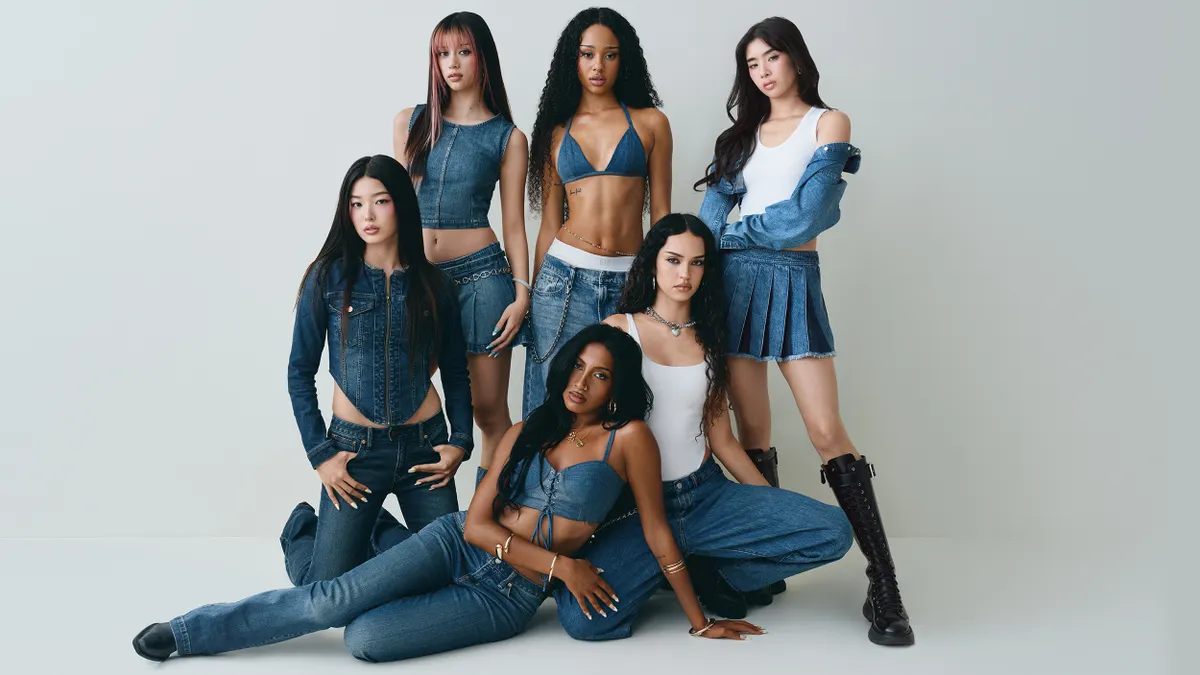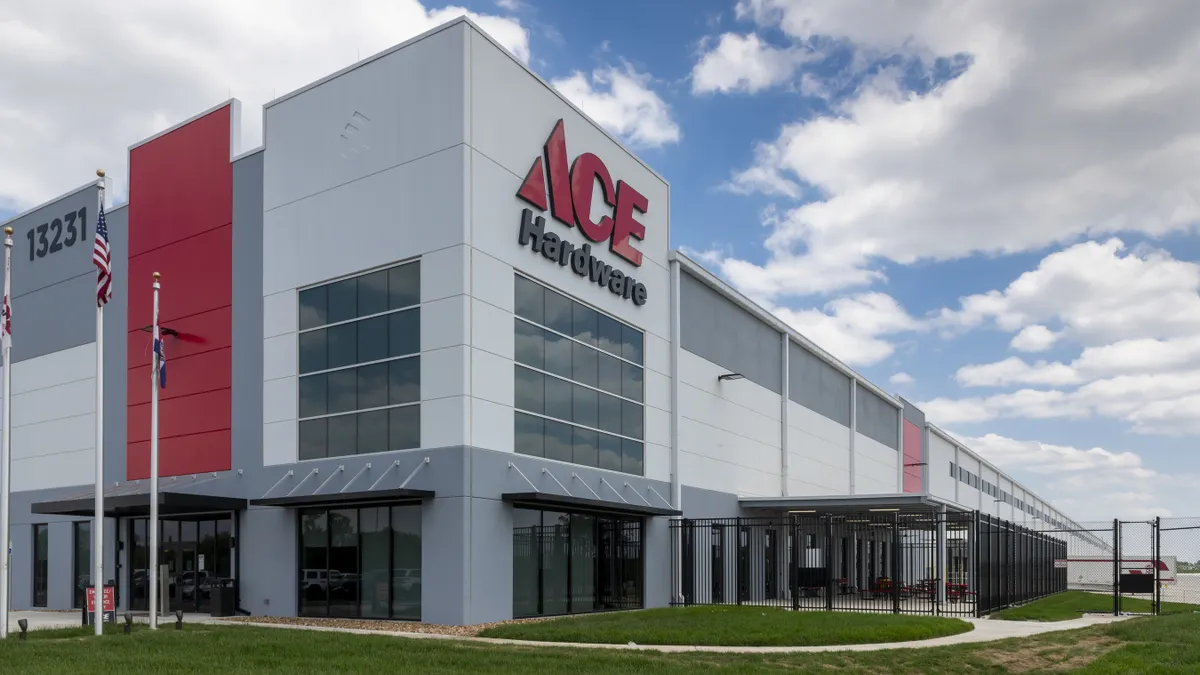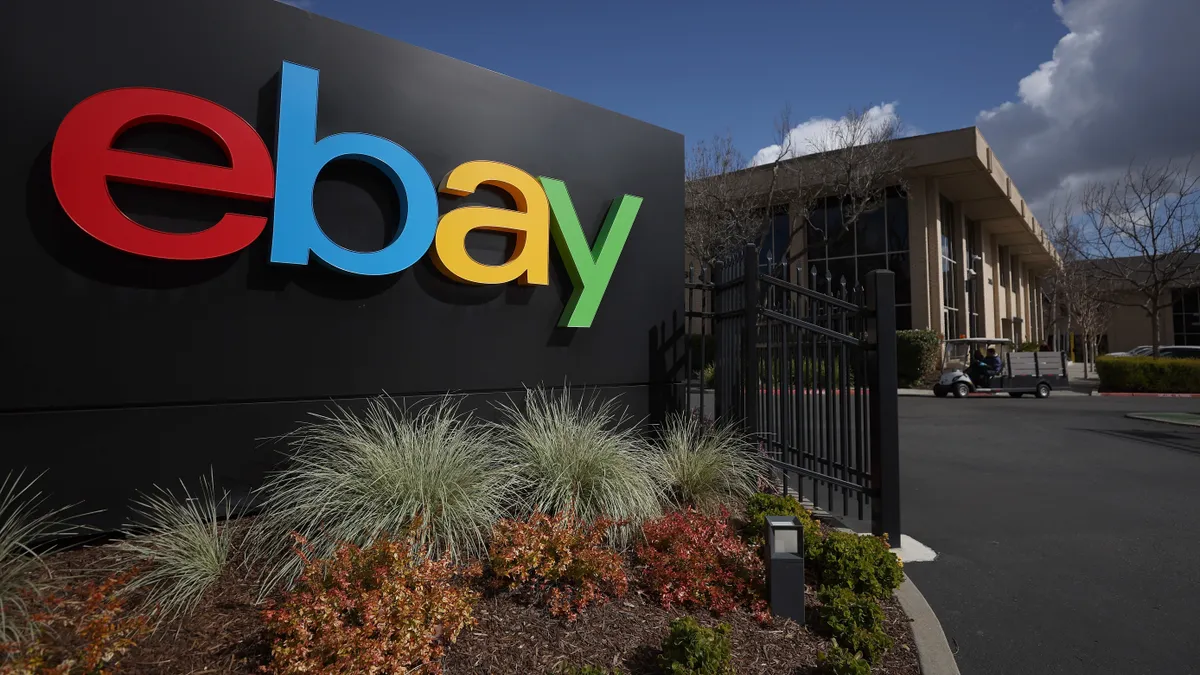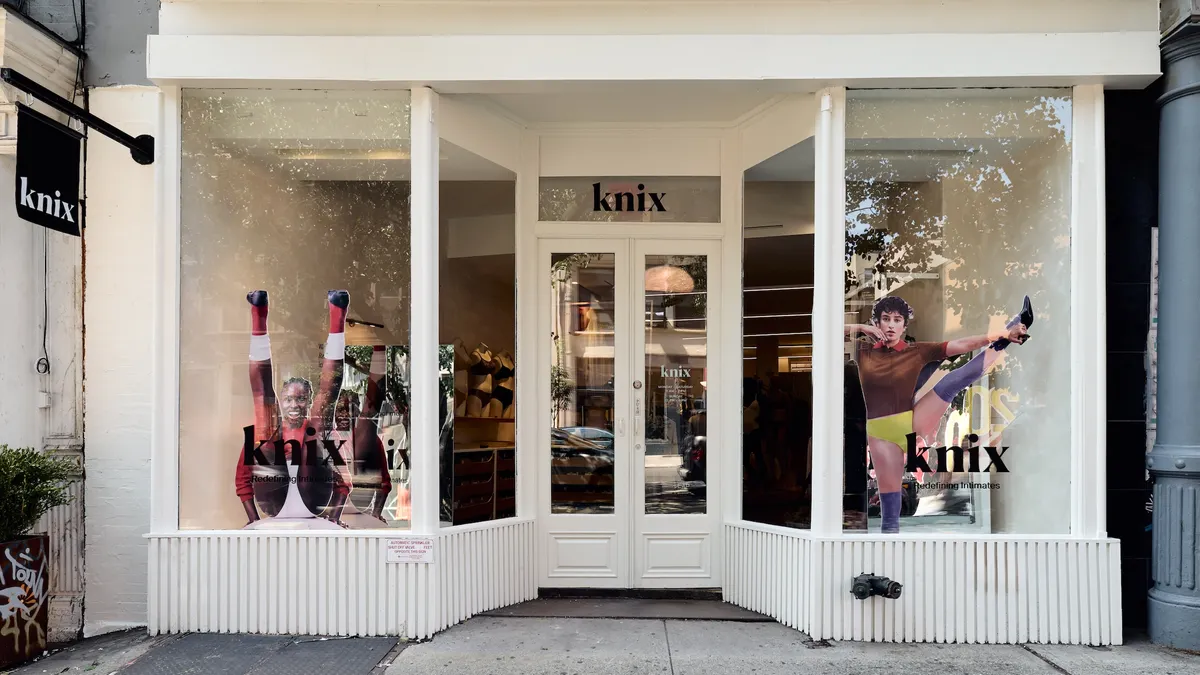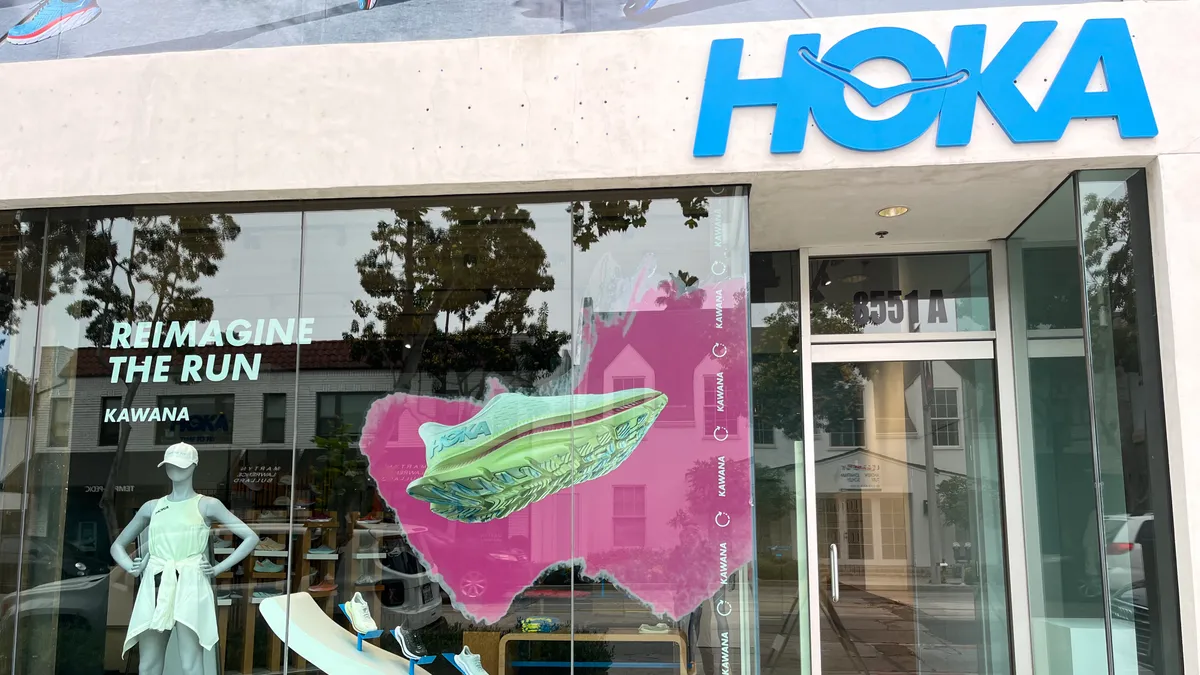The news for sports retailers over the past year has been varied. From Under Armour's struggles to maintain relevance and Lululemon's recent stumble over CEO Laurent Potdevin's departure to Adidas' strong challenge to larger brands and the fading appeal of Nike in the U.S. market.
Indeed, sportswear as a category is heating up. According to Euromonitor International, the category saw growth of 5% in 2017, driven mainly by athleisure, health and wellness trends, and the casualization of the working dress code.
But it's not all rosy — sports retailers are facing increased competition from online players, unsurprisingly led by Amazon, and the success of some big brands is coming at the expense of smaller local and regional banners. In fact, according to a report emailed to Retail Dive by the NPD Group, sales in physical stores declined this year while online sales of sportswear increased in the high single digits.
Here are four of the biggest trends impacting sports retail today, and how brands are reacting to them.
Athleisure is driving popularity
The athleisure trend is a bright spot in sportswear right now, and responsible for much of the category's growth in recent years, though even that subset is slowing down. Consumers, especially the younger ones driving the trend, are driven by the desire to appear fit and healthy, to "look the part," even if they're really not, Matt Powell, vice president and senior industry analyst at The NPD Group, told Retail Dive.
"I think the idea here now is that this apparel is comfortable, it's versatile, I can wear it for many different occasions and if I do want to do physical activities I can wear it to that as well," Powell said. "I don't know that we'll return to a time where we're wearing more formal clothing."
"You see people in suits, but wearing sneakers with it, and that casualization is certainly driving the sportswear market."

Ayako Homma
Senior Analyst at Euromonitor International
That's mirrored in the sneaker market, which has captured the attention of many retailers due to its growing popularity in an athleisure-dominated world. From LVMH's investment in Stadium Goods to Zappos' November announcement it would be opening sneaker shops, the hype around the casual footwear is growing.
One need look no further than Nike's recent Air Jordan pre-release, which sold out on Snapchat in 23 minutes, to see the potential of the market. Even Gap Inc. is turning to its smaller sportswear brand Athleta to drive sales, rather than relying on the flagship.
"You see people in suits, but wearing sneakers with it, and that casualization is certainly driving the sportswear market," Ayako Homma, a senior analyst at Euromonitor International, told Retail Dive. "I think that manufacturers are bringing more of a mix of functionality and fashion in their products now, so that design innovation also attracts new consumers."
And where consumers go, retailers will follow. Reports surfaced in October that Amazon would be getting into the market and sales in that category had already been doing well for the retailer, according to L2. But even non-traditional fast fashion players like Forever 21 and Asos have entered the category, hoping to steal a piece of the highly lucrative pie.
"Athleisure is such a mega trend in apparel right now that everyone should have that product category."

Michelle Grant
Head of Retail at Euromonitor International
According to Michelle Grant, head of retail at Euromonitor International, that's exactly what they should be doing, regardless of whether or not it's their main focus.
"Athleisure is such a mega trend in apparel right now that everyone should have that product category," Grant told Retail Dive. "If you can't do it from the big names because they don't want to give you inventory for whatever reason, you can certainly turn and build your own private label product that is tailored to your customer's tastes."
Sportswear brands are becoming lifestyle brands
Hand-in-hand with the athleisure trend is the transition of sportswear brands to more lifestyle-focused labels. That works well with the streetwear styles that have become more popular, as well as the recent interest in more classic or retro styles, which according to Homma have driven the success of Adidas and Puma this year.
This movement has also led to the development of sportswear brands that don't necessarily look like sportswear brands. Outdoor Voices is one such player. The company, which recently opened its sixth physical store, has taken a widely different approach to activewear than the typical sporting goods store. Not only does the company cater to the athleisure trend by making clothes targeted at the average everyday athlete, but the company also gets serious about connecting with customers on social, including taking suggestions for future items.
"Outdoor Voices is trying to fill the gap between performance wear and lifestyle wear," Homma told Retail Dive. "They offer fitness classes and dog walking together. They make themselves look more like a lifestyle brand than a sportswear brand."
"These influencers of the hip hop culture, the skate culture and other celebrity culture are really becoming the mainstream curators of what's cool, and that's translated into footwear."

Michelle Grant
Head of Retail at Euromonitor International
They have a similar aesthetic to Lululemon, which has also been doing well this year, thanks to a dedicated push into menswear. The casual athlete isn't the only thing driving the lifestyle push of sportswear brands, though. There's also been a shift toward using celebrity influencers to drive interest, in the vein of Kanye West's long-standing Yeezy line with Adidas.
These celebrity partnerships also help with a given brand's discoverability, as celebrities will often share products on social platforms like Instagram, which itself is a powerful platform for retailers. In fact, influencer marketing jumped 198% last year and over 70% of brands use Instagram influencers as part of their marketing campaigns. It's not very hard to see why — according to an August study by Dana Rebecca Designs, 72% of Instagram users have made purchases based on something they saw on the platform.
"These influencers of the hip hop culture, the skate culture and other celebrity culture are really becoming the mainstream curators of what's cool, and that's translated into footwear," Grant said, noting how many of these partnerships are built around popular sneaker releases.
Sports retail: Forced to face the Amazon problem
It's not all rainbows and celebrity partnerships, though. There are several clouds hovering over sports retail, not least of all a cumulonimbus — a towering storm cloud named Amazon.
The sportswear industry is now feeling the gaze of that watchful eye, or perhaps more accurately, feeling the pressure of the 52% of online shoppers who turn to Amazon for apparel. Still, it's a hard place for any brand, especially with the growth of Amazon's private labels, many of which simply mimick the most popular products sold on its site.
"The recognition is that Amazon owns a lot of eyeballs out there with their prime membership."

Matt Powell
Vice President and Senior Industry Analyst at the NPD Group
"The recognition is that Amazon owns a lot of eyeballs out there with their prime membership," Powell said. "People are going to Amazon first in many cases, in terms of searching for a product, so it's a very enticing retail channel for any brand out there."
The power of that potential surfaced this summer, when Nike announced it would sell through Amazon, a move that sent shares down at many of its retail partners. Then again, Nike may not have much choice. According to Homma, e-commerce is becoming increasingly central to the sportswear market, causing players like Nike to focus more on their direct-to-consumer networks.
The downside is not just that retailers are forced to weigh the pros and cons of selling on Amazon, but also that smaller mom-and-pop shops are getting nudged out of business, along with sports retailers that cater more to a specific segment.
"They don't have enough cache to have a robust e-commerce business, and e-commerce is becoming more and more important so they remain the most vulnerable," Powell told Retail Dive. "The specialty sector — specialty bike, specialty run, outdoor, snow, ski — all of those retailers are under duress right now."
The shakeout is continuing
Sports retail, popular as it may be, is not an easy space to be in right now. Over the past couple of years, we've seen Sports Authority succumb to bankruptcy, along with Sports Chalet, Eastern Outfitters and Gander Mountain, which was swiftly picked up by Camping World and is now reopening stores.
That leaves the highest amount of market share with Dick's Sporting Goods, which currently controls 19% of the market, according to Euromonitor, followed by Bass Pro (14%) and Academy Sports and Outdoors (11%). The big are likely only going to get bigger, according to Powell, since they hold more negotiating power when it comes to brands and receive bigger discounts.
"I think they're finding that because they're not making true performance wear, the value isn't there for the consumer."

Matt Powell
Vice President and Senior Industry Analyst at the NPD Group
That doesn't necessarily mean that everyone will be able to stay in business, though. Powell suspects that retailers who have adopted the category just for the traffic will start moving away from it in the future.
"I think they're finding that because they're not making true performance wear, the value isn't there for the consumer," Powell said. "So my gut is that we'll see some of these wholesalers and brands giving up on activewear and the business returning to the core."
The shakeout will also hit retailers that don't have a differentiated shopping experience, Grant noted, saying there's still room for companies to "flounder." Indeed, Nike's U.S. segment was hit hard this year by the weak wholesale business, which forced its retail partners to heavily discount products just to clear inventory — something that could lead to brands being more selective about where they sell in the future.
At the least, distribution partners will have to prove their worth to gain access to inventory from big players like Nike, Adidas and Puma. Grant points to Stitch Fix as one example of a company that successfully partnered with a sportswear brand (Nike), and notes that other potential partners will have to offer equally compelling reasons to get in.
"The pitch that Stitch Fix has is 'we've cornered the time-pressed, affluent mother that makes all the clothing decisions for her family, so we're going to bring you a new customer,'" Grant said. "That's probably how they got access to Nike's supply of certain categories and products."
Without a similar pitch, retail partners could be left in the dust by the very sportswear brands their customers are coveting.









